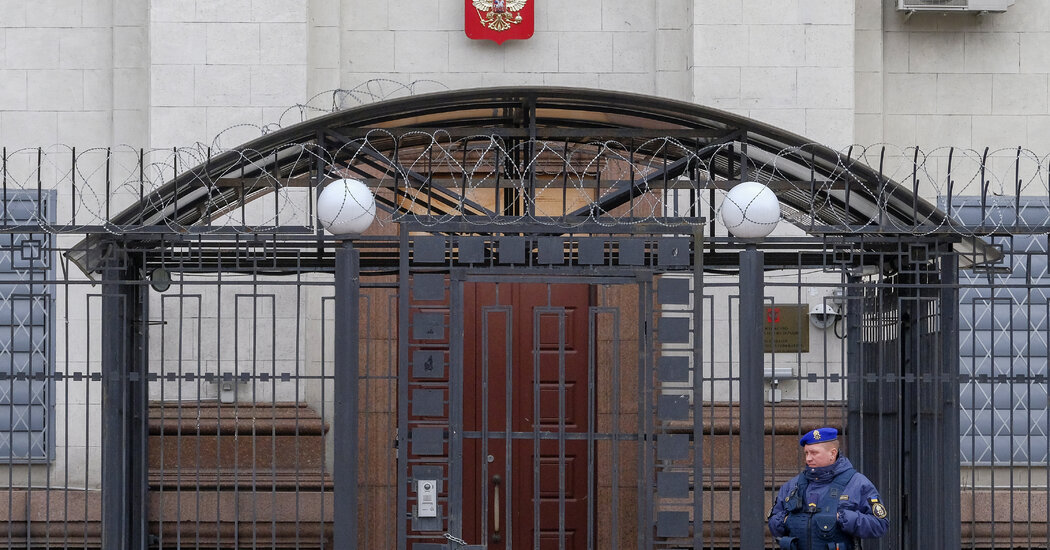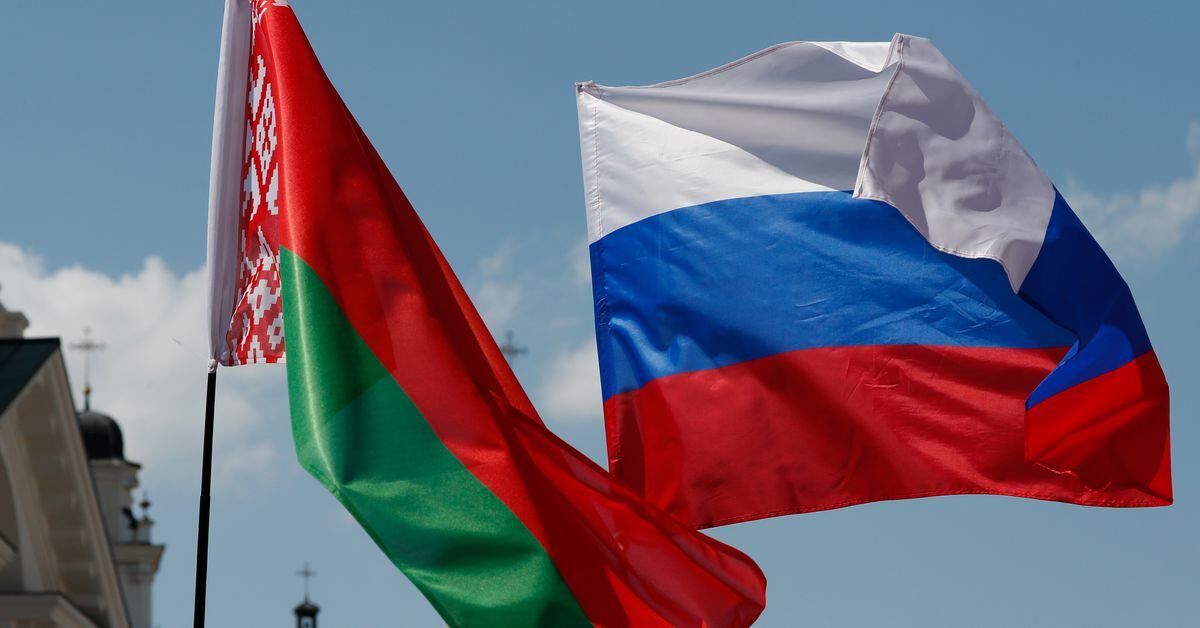Ukrainassa on myös eräs entinen sähköntuotantolaitos joka saattaa vaikuttaa?Onkohan nyt analyytikko unohtanut sen että Venäjä ilmoitti joulukuussa puolustusministeri Sergei Shoigun suulla että USA (=Venäjä) tekee kemiallisen provokaation Itä-Ukrainassa.
Vastaisin siis tuolle Andy Scollickille että Venäjä suunnittelee "Mainilan Laukauksia v.2.0.22".
Install the app
How to install the app on iOS
Follow along with the video below to see how to install our site as a web app on your home screen.
Note: This feature may not be available in some browsers.
You are using an out of date browser. It may not display this or other websites correctly.
You should upgrade or use an alternative browser.
You should upgrade or use an alternative browser.
Ukrainan konflikti/sota
Missä päin tuo ajoneuvo siis olikaan havaittu? Tsernobilin alueen kautta Kiovaan eteneminen kuulostaisi sopivan uhkarohkealta siirrolta. Taitaa olla lyhin matkakin ainakin linnuntietä mitattuna. Toki samat välineet ovat tarpeen myös mainittuun kemialliseen false flagiin liittyen. Siksi joukon sijainti olisi paljonpuhuva tieto.Ukrainassa on myös eräs entinen sähköntuotantolaitos joka saattaa vaikuttaa?
Kevätretki lähestyy..
Toki, jos kemiallisia käytetään false-flag Iin, niin tarviiko ryssät silloin tunnistusta? Luulen että silloin voi olla 100% varma että kemiaa on ja vielä 100% varma mitä kemiaa on, ilman tuota laitteistoakinMissä päin tuo ajoneuvo siis olikaan havaittu? Tsernobilin alueen kautta Kiovaan eteneminen kuulostaisi sopivan uhkarohkealta siirrolta. Taitaa olla lyhin matkakin ainakin linnuntietä mitattuna. Toki samat välineet ovat tarpeen myös mainittuun kemialliseen false flagiin liittyen. Siksi joukon sijainti olisi paljonpuhuva tieto.

Uskon että tuo nopea ja varsinkin tyhjä reitti Kiovaan kyllä kiinnostaa Putleria...
Joukot ryhmitetään eteläiseen Valko-Venäjään harjoitusten varjolla, ja avot.
Selvästi päätös pitää ja kaikki muu on ollut pelkkää teatteria ja ajanpeluuta.Kevätretki lähestyy..
Nuohan voivat olla aineet tuntevana paikalla myös suorittavana joukko-osastona... eikä noiden läsnäolo ainakaan heikennä valheiden uskottavuutta. Iso kysymys on, mitä kemiallisten käyttäminen tekee mielipiteille lännessä?Toki, jos kemiallisia käytetään false-flag Iin, niin tarviiko ryssät silloin tunnistusta? Luulen että silloin voi olla 100% varma että kemiaa on ja vielä 100% varma mitä kemiaa on, ilman tuota laitteistoakin
Uskon että tuo nopea ja varsinkin tyhjä reitti Kiovaan kyllä kiinnostaa Putleria...
Joukot ryhmitetään eteläiseen Valko-Venäjään harjoitusten varjolla, ja avot.
Toki, jos kemiallisia käytetään false-flag Iin, niin tarviiko ryssät silloin tunnistusta? Luulen että silloin voi olla 100% varma että kemiaa on ja vielä 100% varma mitä kemiaa on, ilman tuota laitteistoakin
Uskon että tuo nopea ja varsinkin tyhjä reitti Kiovaan kyllä kiinnostaa Putleria...
Joukot ryhmitetään eteläiseen Valko-Venäjään harjoitusten varjolla, ja avot.
Hyökkäyksen naamioiminen sotaharjoitukseksi olisi kieltämättä melkoisen näppärä teko, Ukrainan armeijalla, NATO:lla ja Euroopalla on syytäkin olla silmä kovana ja sormi liipasimella tämän johdosta.
Paitsi Saksa, se vaan rapsuttelee itseään hämillään sieltä täältä ja voivottelee lähinnä itseään ja kaasutoimitusten epävarmuutta. Seppo Räty sen sanoi: Saksa on paska maa!
Mulle tuli vasempaan pakaraan sellainen kutina, että kaiken tämän takana on se että Putin on törmännyt seinään. 2014-2015 taustalla oli puhdas ideologia Venäjän suuruuden palauttamisesta ja kansakunnan hengen nostatuksesta. Sitten hommaa ryssittiin (siviilikone alas, krimin annexointi yms.) eikä Putin päässyt tavoitteeseen joka olisi ollut että länsi hyväksyy teot ja olot normalisoituu.
Nyt on vuosia kulunut ja sen aikana kulisseissa on ehditty tehdä kaikenlaista. Todennäköisesti Putin tietää, että kaikki Putinin varastettu omaisuus lännessä on nyt siinä tilasssa että se voidaan ottaa häneltä pois, kunhan on siihen sopivat syyt. Syynä voi olla hyökkäyssodan aloitus, tai vastaavasti jos putin joskus luopuu vallasta niin kansainvälinen oikeus sotarikoksista. Sama koskee omaisuutta Venäjällä, jossa mitään omaisuuden suojaa ei oikeasti ole olemassa. Eli joka tapauksessa Putinin omaisuus on uhattuna. Nyt ainoa vaihtoehto on enää pullistella entistä enemmän ja yrittää tiristää joku henkilökohtainen bail-out.
Nyt on vuosia kulunut ja sen aikana kulisseissa on ehditty tehdä kaikenlaista. Todennäköisesti Putin tietää, että kaikki Putinin varastettu omaisuus lännessä on nyt siinä tilasssa että se voidaan ottaa häneltä pois, kunhan on siihen sopivat syyt. Syynä voi olla hyökkäyssodan aloitus, tai vastaavasti jos putin joskus luopuu vallasta niin kansainvälinen oikeus sotarikoksista. Sama koskee omaisuutta Venäjällä, jossa mitään omaisuuden suojaa ei oikeasti ole olemassa. Eli joka tapauksessa Putinin omaisuus on uhattuna. Nyt ainoa vaihtoehto on enää pullistella entistä enemmän ja yrittää tiristää joku henkilökohtainen bail-out.
https://mobile.twitter.com/STRATMIL/status/1483344134534541312
Lyhyttä reittiä Kiovaan spekuloidaan nyt muuallakin! Ne CBRN vehkeet on nimenomaan valkovenäjällä
Lyhyttä reittiä Kiovaan spekuloidaan nyt muuallakin! Ne CBRN vehkeet on nimenomaan valkovenäjällä
letkuspede
Ylipäällikkö
Venäjän federaatio ja Valko-Venäjä harkitsevat tilannetta, jossa liittovaltion turvallisuus edellyttää maiden koko sotilaallisen potentiaalin osallistumista, Venäjän puolustusministeriö kertoi.
Kaksi S-400-pataljoonaa, Pantsir-S-pataljoona ja 12 Su-35-hävittäjää siirretään Venäjältä harjoituksiin Valko-Venäjälle - Venäjän varaulkoministeri
Kaksi S-400-pataljoonaa, Pantsir-S-pataljoona ja 12 Su-35-hävittäjää siirretään Venäjältä harjoituksiin Valko-Venäjälle - Venäjän varaulkoministeri
Mulle tuli vasempaan pakaraan sellainen kutina, että kaiken tämän takana on se että Putin on törmännyt seinään. 2014-2015 taustalla oli puhdas ideologia Venäjän suuruuden palauttamisesta ja kansakunnan hengen nostatuksesta. Sitten hommaa ryssittiin (siviilikone alas, krimin annexointi yms.) eikä Putin päässyt tavoitteeseen joka olisi ollut että länsi hyväksyy teot ja olot normalisoituu.
Nyt on vuosia kulunut ja sen aikana kulisseissa on ehditty tehdä kaikenlaista. Todennäköisesti Putin tietää, että kaikki Putinin varastettu omaisuus lännessä on nyt siinä tilasssa että se voidaan ottaa häneltä pois, kunhan on siihen sopivat syyt. Syynä voi olla hyökkäyssodan aloitus, tai vastaavasti jos putin joskus luopuu vallasta niin kansainvälinen oikeus sotarikoksista. Sama koskee omaisuutta Venäjällä, jossa mitään omaisuuden suojaa ei oikeasti ole olemassa. Eli joka tapauksessa Putinin omaisuus on uhattuna. Nyt ainoa vaihtoehto on enää pullistella entistä enemmän ja yrittää tiristää joku henkilökohtainen bail-out.
En usko, että Putin on se kantava voima suuruuden tavoittelussa. Kansallinen herääminen on mahdollisesti tapahtunut johtoportaassa laajemmiltikin ja kasvaa entisestään onnistuneiden operaatioiden myötä. Näen nykyisen kukkoilun tyypillisenä kollektiivisena heräämisenä. Vastaavia esimerkkejä heräämisestä on EU:n sisällä esim. Puola ja EU:n ulkopuolella Iso-Britannia. Venäjällä herääminen näkyy fraasina "kasakka ottaa kaiken, mikä irti lähtee" ja Puolassa vastaavasti "oma maa mansikka, muu maa mustikka".
Mikfin70
Ylipäällikkö

Ukraina | Britannia antaa Ukrainalle panssarintorjuntaohjuksia
Puolustusministeri Ben Wallace: Aseet ovat ominaisuuksiltaan puhtaasti puolustuksellisia.
Rahtilentojen kuorma selvisi.
letkuspede
Ylipäällikkö
Eilen hyökätty jälleen kahdelle Ukrainan hallituksen sivustolle. Tällä viikolla Kiovan metroasemat saavat pommiuhkauksia päivittäin.
letkuspede
Ylipäällikkö
Venäjä harventaa suurlähetystöään Ukrainassa, mahdollinen vihje Putinin seuraavalle liikkeelle
Hidas evakuointi voi olla osittain propagandaa, osittain konfliktiin valmistautumista tai osittain tekosyitä, Ukrainan ja Yhdysvaltojen viranomaiset sanovat. Se voi olla kaikki kolme.
Viikkoa ennen intensiivisten diplomaattisten tapaamisten alkamista Venäjän joukkojen kerääntymisestä Ukrainan rajalle, amerikkalaiset ja ukrainalaiset viranomaiset seurasivat kaukaa, kun Venäjä alkoi tyhjentää suurlähetystöään Ukrainan pääkaupungissa Kiovassa.

 www.nytimes.com
www.nytimes.com
Hidas evakuointi voi olla osittain propagandaa, osittain konfliktiin valmistautumista tai osittain tekosyitä, Ukrainan ja Yhdysvaltojen viranomaiset sanovat. Se voi olla kaikki kolme.
Viikkoa ennen intensiivisten diplomaattisten tapaamisten alkamista Venäjän joukkojen kerääntymisestä Ukrainan rajalle, amerikkalaiset ja ukrainalaiset viranomaiset seurasivat kaukaa, kun Venäjä alkoi tyhjentää suurlähetystöään Ukrainan pääkaupungissa Kiovassa.

Russia Thins Out Its Embassy in Ukraine, a Possible Clue to Putin’s Next Move
The slow evacuation may be part propaganda, part preparation for a conflict or part feint, Ukrainian and U.S. officials say. It could be all three.
Over the past few months, geopolitical tensions have escalated as Russia amassed tens of thousands of troops along Ukraine’s border and made subtle but far-reaching threats if Ukraine and NATO don’t agree to Kremlin demands.
Now, a similar dispute is playing out in cyber arenas, as unknown hackers late last week defaced scores of Ukrainian government websites and left a cryptic warning to Ukrainian citizens who attempted to receive services.

Microsoft warns of destructive disk wiper targeting Ukraine
Ukrainian authorities blame Russia for attacks as geopolitical tensions escalate.
 arstechnica.com
arstechnica.com
, Microsoft said in a post over the weekend, “destructive” malware with the ability to permanently destroy computers and all data stored on them began appearing on the networks a dozens of government, nonprofit, and information technology organizations, all based in Ukraine. The malware—which Microsoft is calling Whispergate—masquerades as ransomware and demands $10,000 in bitcoin for data to be restored.
But Whispergate lacks the means to distribute decryption keys and provide technical support to victims, traits that are found in virtually all working ransomware deployed in the wild. It also overwrites the master boot record—a part of the hard drive that starts the operating system during bootup.
“Overwriting the MBR is atypical for cybercriminal ransomware,” members of the Microsoft Threat Intelligence Center wrote in Saturday’s post. “In reality, the ransomware note is a ruse and that the malware destructs MBR and the contents of the files it targets. There are several reasons why this activity is inconsistent with cybercriminal ransomware activity observed by MSTIC.”
Over the weekend, Serhiy Demedyuk, deputy head of Ukraine’s National Security and Defense Council, told news outlets that preliminary findings from a joint investigation of several Ukrainian state agencies show that a threat actor group known as UNC1151 was likely behind the defacement hack. The group, which researchers at security firm Mandiant have linked to the government of Russian ally Belarus, was behind an influence campaign named Ghostwriter.
Ghostwriter worked by using phishing emails and theft domains that spoof legitimate websites such as Facebook to steal victim credentials. With control of content management systems belonging to news sites and other heavily trafficked properties, UNC1151 “primarily promoted anti-NATO narratives that appeared intended to undercut regional security cooperation in operations targeting Lithuania, Latvia, and Poland,” authors of the Mandiant report wrote.
Websaitin defacing on pieni asia, mutta nyt tämä on selkeästi mennyt pahojen tekemiseen. Verkkoliikenteen katkaisu voisi olla tuntuva näpäytys.
*JakovlevaEttei vaan olisi oikealta nimeltään Katyusha Jakovlev?
letkuspede
Ylipäällikkö
Ensimmäinen vaihe kestää helmikuun 9. päivään
Toinen vaihe 10.-20. helmikuuta.

 www.reuters.com
www.reuters.com
Toinen vaihe 10.-20. helmikuuta.

Russia, Belarus to rehearse repelling external attack in joint drills
Russia and Belarus will rehearse repelling an external attack when they hold joint military drills in Belarus next month, both sides said on Tuesday, at a time of acute tensions with the West over neighbouring Ukraine.
Ensimmäinen vaihe (Kiova) kestää helmikuun 9. päivään
Toinen vaihe (loput) 10.-20. helmikuuta.

Russia, Belarus to rehearse repelling external attack in joint drills
Russia and Belarus will rehearse repelling an external attack when they hold joint military drills in Belarus next month, both sides said on Tuesday, at a time of acute tensions with the West over neighbouring Ukraine.www.reuters.com
BlackFox
Ylipäällikkö
Tuossa uutinen:
Ukraina | Britannia antaa Ukrainalle panssarintorjuntaohjuksia
Puolustusministeri Ben Wallace: Aseet ovat ominaisuuksiltaan puhtaasti puolustuksellisia.www.hs.fi
Rahtilentojen kuorma selvisi.
Britannia antaa Ukrainalle panssarintorjuntaohjuksia
Puolustusministeri Ben Wallace: Aseet ovat ominaisuuksiltaan puhtaasti puolustuksellisia.Ukrainalaissotilas itäisen Ukrainan Horlivkassa tammikuun alussa. Kuva: ANDRIY DUBCHAK / Reuters
Heikki Aittokoski HS
11:25
Britannia antaa Ukrainalle ylimääräistä sotilasapua Venäjän kasvaneen uhkan takia, kertoo Britannian yleisradioyhtiö BBC.
Kyse on panssarintorjuntaohjuksista, BBC kertoo. Britannian puolustusministerin Ben Wallacen mukaan aseet ovat ominaisuuksiltaan puhtaasti puolustuksellisia. Hän tähdensi, että niillä on lyhyt kantama.
Ukrainaan lähtee myös pieni ryhmä brittisotilaita antamaan koulutusta ohjusten käytössä. Ukrainassa on jo entuudestaan joitakin kymmeniä brittisotilaita koulutustehtävissä.
Wallace kertoi, että päätös panssarintorjuntaohjuksista tehtiin Venäjän ”yhä uhkaavamman käytöksen takia”.
letkuspede
Ylipäällikkö
Ensimmäiset joukot jo saapuneet Valko-Venäjän Brestiin. Meinaavatko kökkiä tuolla pakkasessa kolme viikkoa?
Harjoitus vaikuttaa myös ydinharjoitukselta, jossa sukellusveneet, strategiset pommikoneet ja pitkän matkan ja mannertenväliset ballistiset ohjukset.
Harjoitus vaikuttaa myös ydinharjoitukselta, jossa sukellusveneet, strategiset pommikoneet ja pitkän matkan ja mannertenväliset ballistiset ohjukset.
